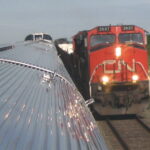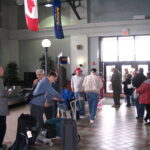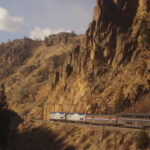Comments from a European.
Note: What follows is an extended comment from a regular reader from Belgium. His observations are so interesting, I am using them in full below . . . with many thanks.
European, here.
We don’t use trains to travel the width of the continent, either (well, some exceptions exist, I’m one of them, but we are exceptions). They use the train for relative short hops of perhaps 1-3 hours, mostly. High speed rail expands the range you can cover in that time, changing the game.
Where most went by plane between Barcelona and Madrid, few still do. Same for say Amsterdam-Paris, or Milan-Rome.
True long-distance trains have suffered immensely, and few remain, even if they see a moderate resurgence, now. Because it’s not only time flying, it’s time getting to the airport (which is rarely near your departure or destination), the whole security and check-in hassle, etc which should be considered, and trains here don’t score that bad.
Even if a train ride might be slightly longer, it’s uninterrupted you-time, unlike flying which may be half an hour drive to the airport, half an hour getting through security, less then an hour in the air and again a half hour to your final destination. I’ll take a 3-hour train ride over that mess anytime.
With the exception of the most ecologically minded activists, most rail advocates are not against flying as such, but think flying is not suited for short trips.
And they are not alone, there’s a reason why the chairman of Amsterdam Airport advocates for more (high-speed) trains: they free up much-needed capacity at airports for more long-distance [flights] by getting rid of most local flights, and when airports have a high-speed train station, by bringing more customers to them (assuming their business model doesn’t rely mainly on parking fees, of course.)
Yes, this can’t be directly translated to a North-American context, but few are advocating a transcontinental high-speed network. The conditions which exist in most of (Western) Europe exist in some regions, LA-San Francisco, the Canadian ‘Corridor’, the Texas Triangle, the NEC, etc.
The most frequent flight connection in the US is LA-SF, if even part of that demand could be met by rail, a lot of slots could be freed up for intercontinental flights with better margins.



